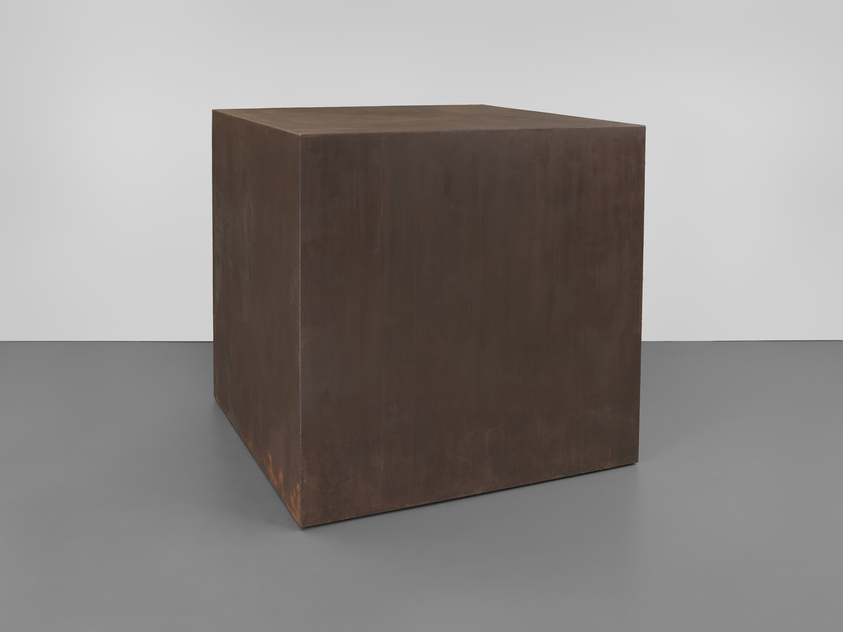0:00
Tony Smith, Die, 1962
0:00
Narrator: Architectural historian Michael Hays.
A. Michael Hays: It would be correct to think of Die as a defining work of Minimalist art. But it's not Minimalist only. We tend to think of Minimalist art as having minimal content, being devoid of extrinsic references or extrinsic meanings. With Die we get something different. We get a piece that engages the viewer in a physical way, in a bodily way. There's something about the dimensions of course, it's a six-by-six cube—that is, it's roughly the height of a person. You can’t see over it, but at the same time it's not a building, it's not huge. It’s raised slightly off the floor, so in fact even the sixth side, even the bottom, is important. So I think the viewer walks around it engages it as a presence, and not just an idea—it's not the idea of a cube, it is a thing.
Also, the material. It’s made of steel, but unlike a lot of Minimalist sculpture it's not painted, it's oiled. And there's therefore a depth to the surface, a kind of complexity to the surface that you would expect almost more from a painting.
The title is important. The title is Die. And of course "die" is one of a pair of dice, and it is a cube, a black cube. But Die also for Smith meant “die,” dealing with death. He sometimes talked about the chapels carved into the mountains in Greece as being part of a reference. He almost thought of it like a kind of inverted room almost, so it may be a chapel. Smith wanted his works to invoke or to demand thinking about—I would even say spiritual things on the part of the viewer.
